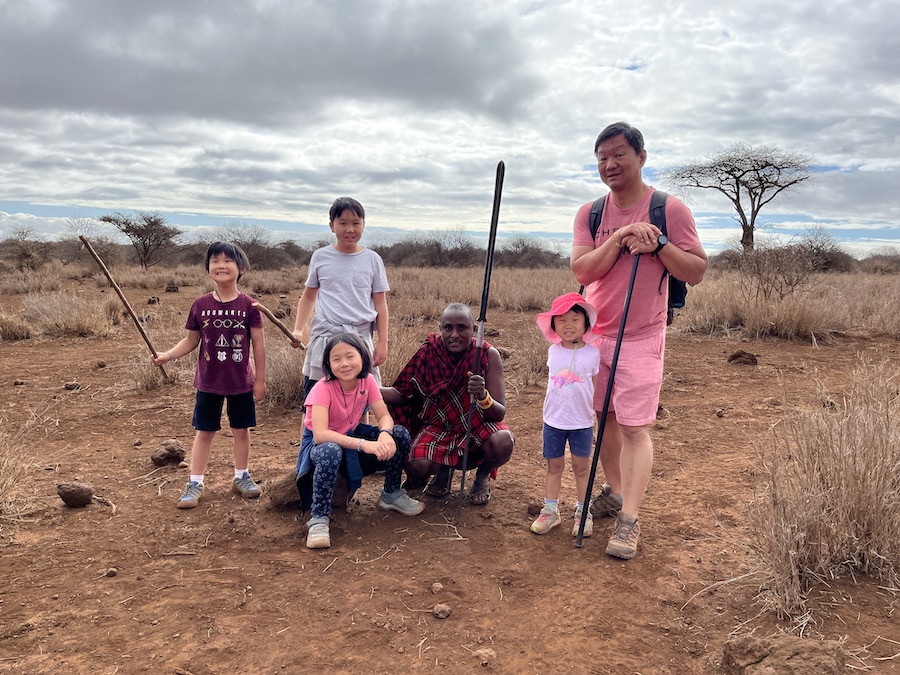As a local Maasai, Samuel knows the area around Amboseli like the back of his hand. He knows every shrub, tree, rock, den and open space as we would know the restaurants, shops and streets in our neighborhood. He took us on a bush walk to show us his ‘hood.
As most Maasai, Samuel dresses in traditional Maasai clothing that includes several layers of shukas draped on his body. He carries a Maasai stick and a spear. The stick is for walking while the spear is for protection. He usually carries a Maasai knife, but he didn’t have it on him the morning of our bush walk because he said he was in a rush and forgot to take it. Samuel let us take turns carrying his stick but he held onto his spear. When he wasn’t walking, Samuel stands in that special Maasai way, elegantly balancing his weight against his spear with one leg crossed over the other.
Samuel taught us how to track animals by their footprints, droppings and other markings. We learned how to identify male and female animals from the formation of their droppings. For example, many male herbivores can poo while walking but females must stand in one place. So the poo for males will be spread over a larger area while the poo for females will be concentrated in one small area.
He pointed out trees and shrubs that are used in traditional Maasai remedies. There is a tree that is boiled and given to pregnant women to cure their indigestion. He pointed out another one that is used to help children recover from chickenpox. He cut a branch from another tree and let us taste the bitter tannin flavor that he finds delicious.
The area has been in a drought for almost two years but Samuel knows that rain is coming soon because when this certain tree flowers, it means that rain is imminent.
He spotted a few hyenas during our walk and guided us to their den. Inside the den, he said, were more than 20 hyenas sleeping with their cubs. There were zebra bones at the mouth of the den that Samuel said would have been the food the mothers dragged to the den for their young.
On another pile of big rocks, there was a bee hive. Samuel told us that Maasai will burn elephant dung to stun the bees in order to get their honey. With the honey, they will make honey beer.
When we returned to the camp, there was a group of elephants stopping for a drink at the watering hole. We watched an adult female, two young elephants and one baby as they drank their fill and then sprayed water on their backs. The mother patiently waited for the baby as it played with the water and then proceeded to lay down on the dusty floor and roll around. Elephants are extremely intelligent animals. Other animals follow elephants because they have a very good memory and can always remember where to find the watering holes. They are also highly social and sentimental creatures. Samuel told us that when an elephant’s family member dies, they will always return to that same place, year after year to pay their respects and remember their loved one.
It could have been my imagination but from what I could see, the mother elephant watching her baby frolic in the mud oblivious to any dangers in the world, had the same expression on her face as I have had many times this month in Kenya – part amusement, part resignation, standing ready to do anything for her child.
Author
-

Song is the mother of four children. She and her family have stepped away from it all and in September 2023, began traveling the world while homeschooling. Song is an ABC (American born Chinese) and has an undergraduate degree from Cornell and an MBA from Harvard. She is an entrepreneur and an educator. Her hobbies include learning, traveling, reading, cooking and baking, and being with children.

